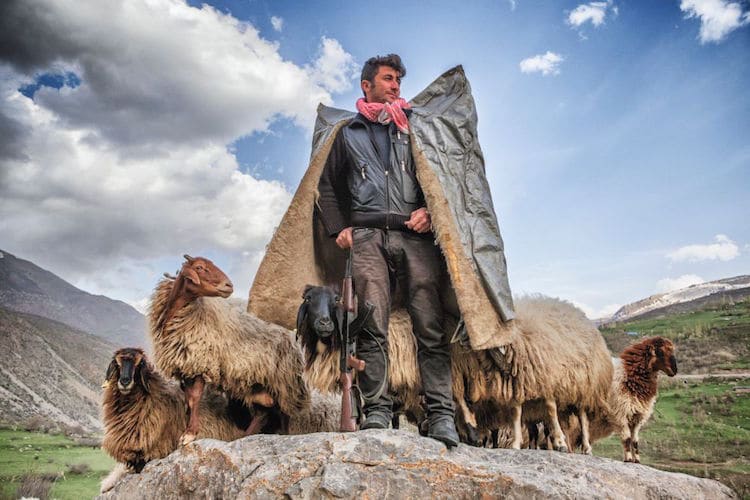
The Shepherd’s Eye. Shepherds wear felt cloaks to protect themselves from the cold. In addition, they carry guns to protect themselves from animal predators. Alakaynak, Van, April 2015
Documentary photographer Nadir Bucan has spent the past six years documenting life in the small villages of Turkey’s Van region. The project, Under the Shadow of the Sun, is a testament to the stripped down life that exists in the remote area, where people’s survival is based on their animals.
The eastern Turkey province of Van has a mainly Kurdish population and is composed of tiny villages. After Bucan moved to the area to teach at a local university, he began spending his weekends documenting village life. The resulting images are a rich depiction of how villagers live their daily lives.
We had the opportunity to speak with Bucan about his work, why he feels it’s even more important in this technological age, and how he is received by the villagers. Read on for our exclusive interview.
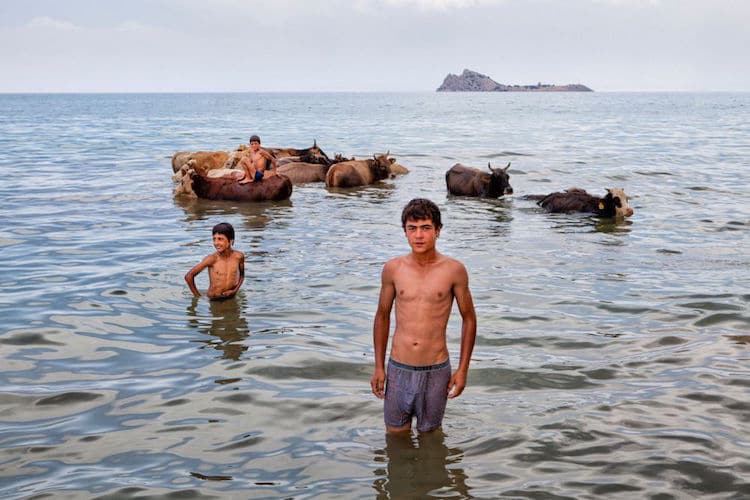
The Lake Boys. They bring the animals to Lake Van for cleaning. Akdamar, Van, July 2012
Can you tell us a bit about yourself and your work as a photographer?
I define myself as both an academic and documentary photographer. I started to take pictures with an analog camera in 1999 when digital photography had not declared its dominance yet. I used film until 2009 and I participated in every stage of photography from chemical bath to printing. I am interested in both practical and theoretical aspects of photography. So, I took my master’s degree in 2014 with my thesis titled Reading Documentary Photography Through Walter Benjamin.
The same year, I started my still ongoing doctorate program in Basic Communication Sciences and now I am working on my thesis about post-documentary photography. I serve as a lecturer at Van Yuzuncu Yil University, Faculty of Fine Arts and I teach photography classes and share my experiences with my students. At the same time, I have academic articles published with the titles Walter Benjamin and Documentary Photography and A Sociologist with a Camera: Sebastião Salgado.
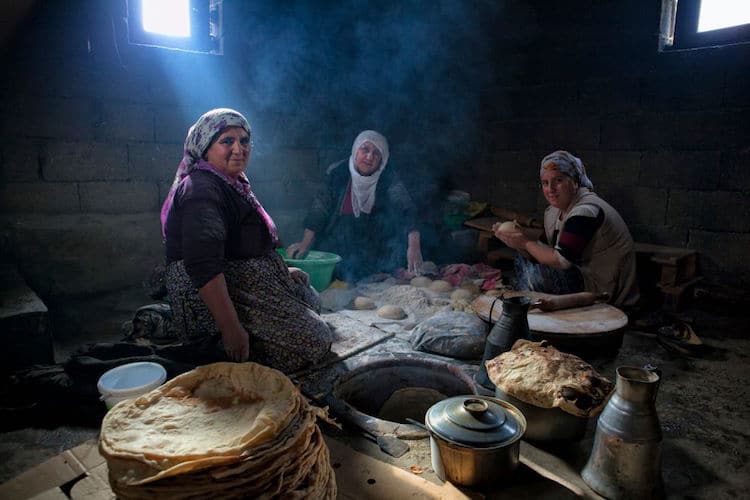
The Tandoor House. Women bake bread in tandoor ovens. Gorundu, Van, January 2017
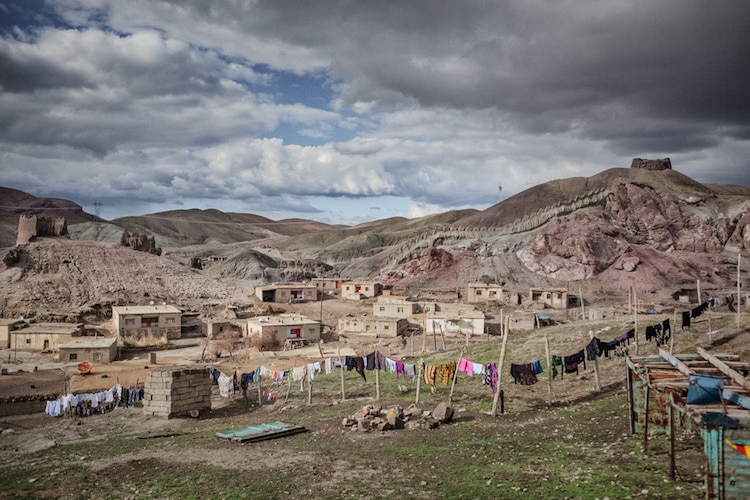
The Village. Although reinforced concrete houses became widespread in villages, adobe houses still exist. Hosap, Van, April 2011
Your images of Van span many years. When did you first visit and how often do you return?
I moved to Van in 2011. Because I was assigned to the Yuzunci Yil University as a lecturer. I’ve been photographing villages of Van usually on weekends since that date. These villages are about 50 miles from my house.
This is a long term work. I started this work, which I have named it as Under the Shadow of the Sun, in 2011 and I still keep going. I have photographed different villages of Van city, such as Toreli, Bilgi, Uzuntekne, Alakaynak, and Gorundu for this project. I try to present some profiles from the daily life of the countryside of the Van. I maintain my witness on the relationship of people in the region with nature and other creatures.
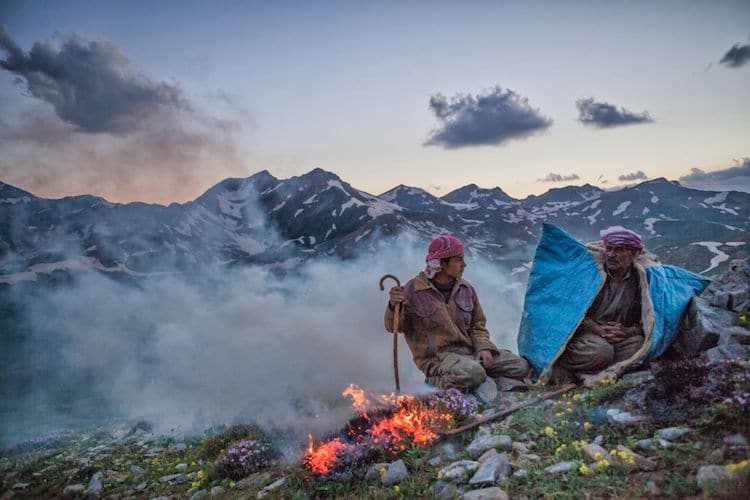
The Nomads. As the nomads put the herd out to graze, they try to warm up at the same time by burning the bushes. Nomads often stop over in Van’s cool highlands. They come to Van with their animals from hot provinces in the southeast to spend four months here each year. Bahcesaray, Van, June 2012
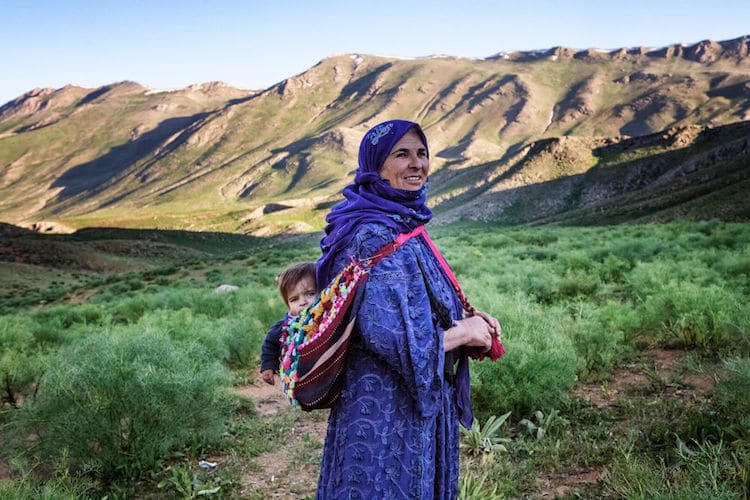
The Nomad Woman. Fatma takes her granddaughter Avesta for a walk. Bahcesaray, Van, June 2015
What attracted you to the lifestyle in Van?
Van, located in the Eastern Anatolia Region of Turkey, emerges as an archaic settlement with its villages, mountains, lakes, and islands. When you pass steep roads and reach the distant mountain villages, a life which some of us have never met welcomes you, a life which has remained in the childhood of some of us and will never come back again.
Animal breeding has shaped daily life practices in the area. The villagers take their animals, which are their only means of existence, to cool highlands in summers because heat means a risk of illness for their animals. Besides, they are not alone. Van’s cool highlands are stopover locations for nomads as well. The nomads coming to Van with their animals from hot southeast provinces spend four months of the year altogether in these highlands. The highlands where they set up their tents become a new stage for them, where they struggle with difficult environmental conditions. Shortly, local people spend their days touching water and soil.
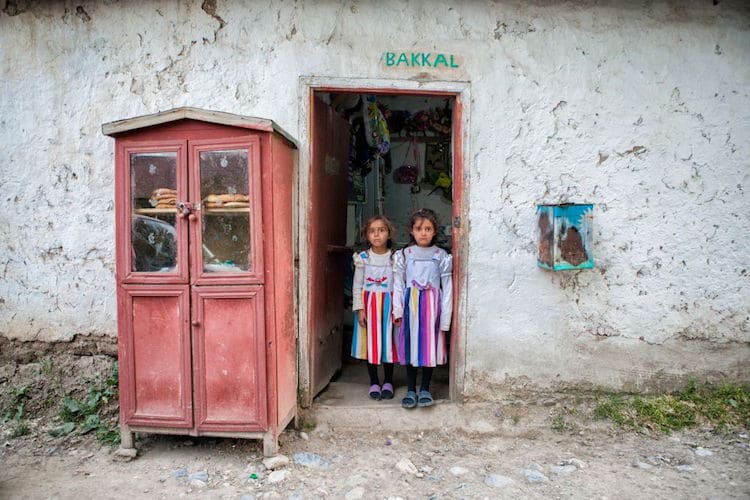
The Twins in Colors. They are at the village grocery to buy ice cream. Dereagzi, Van, July 2013
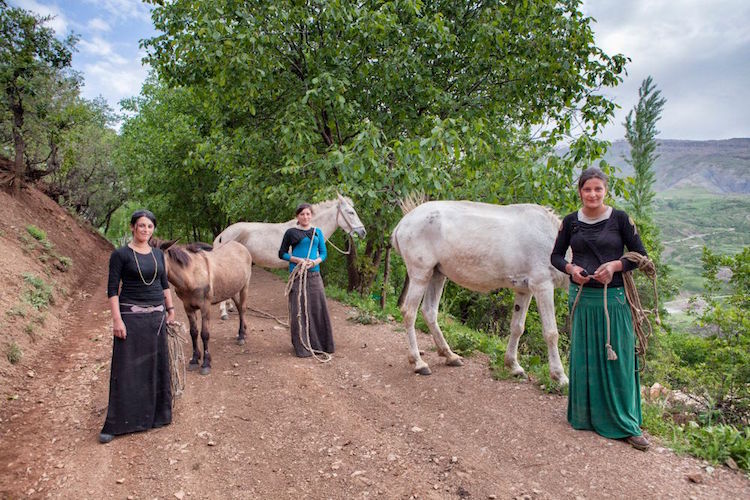
The Sisters and Horses. Sisters take the horses out to feed. Organli, Van, May 2013
Your essay for Lensculture speaks with admiration for the villagers’ ability to survive without the technology that many of us now take for granted. Was it the main motivation for the project?
They exist quietly in these places where technology is not superior, but rather assistive. The dominance of nature on their culture is absolute. A friend of mine told me that after he saw one of my photographs: “They will be able to succeed in surviving a calamity that could happen to the world.” He was really right. Because they know how to deal with difficult natural conditions and meet their own needs, to a large extent.
They are not consumers in the sense we know. They can meet their needs from eating and drinking to heating and shelter. Livestock and nature help them in this regard. They are not dependent on industries. This life is the antithesis of the “techno-life” we live in now, where we are surrounded by objects.
When I was a graduate student, I was reading sociologists such as Zygmunt Bauman, Paul Virilio, and Manuel Castells. They were talking about the decline of human experience in our time. According to them, technologies wiped out time and location concepts and gradually reduced human experiences. Today, a networked society squeezed in the electronic atmosphere of a virtual world is mentioned. But I noticed that human experiences still exist in the villages of Van. I think this is the main motivation for the project.
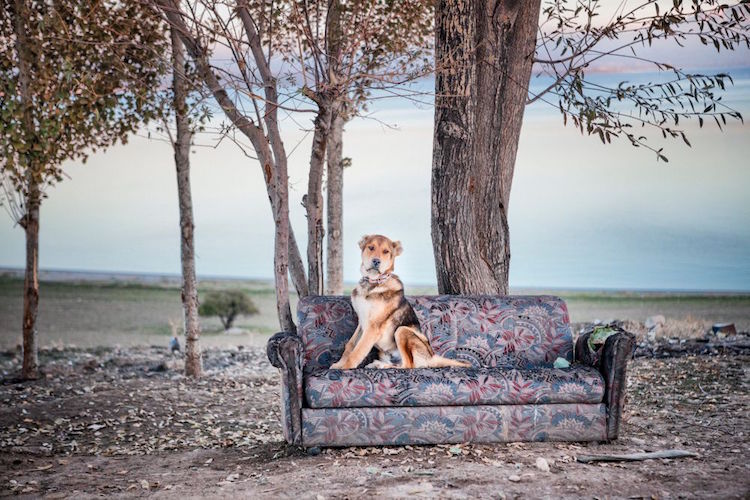
The Dog and the Sofa. His name is Arslan. His main duty is to protect the herd against wolves. Carpanak, Van, December 2012

Adil and His Niece Rojin. They return to the village on a horse. Toreli, Van, June 2015
What do you think people can learn from looking at the way of life lived in Van?
Their life is very difficult but they are happy. The ideology of progress and its technological developments do not make mankind happier. I am not an anti-tech, but it can be destructive when it starts to rule our lives instead of helping us. When we compare past civilizations with the present, we see only that we are technologically superior. But, their cultures, arts, and happiness were far ahead from the present.
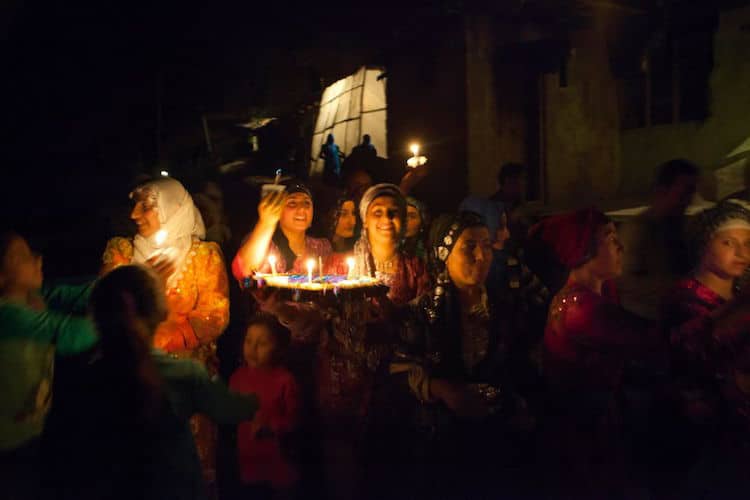
The Henna Night. Women carry henna to put on the bride’s hands. Bilgi, Van, May 2013
How has your relationship with the villagers changed over time?
Over time, my relationship with the local people in the region has developed and they have begun to host me. Sometimes I live with them. For example, I stay in Gorundu village for a couple of nights every visit. I also spent a few nights in the nomadic tent. I constantly communicate with some of them. We wonder about each other. I prefer long term relationships with the people I photograph. As Robert Capa said, “If your photographs are not good enough, it means you are not close enough.”
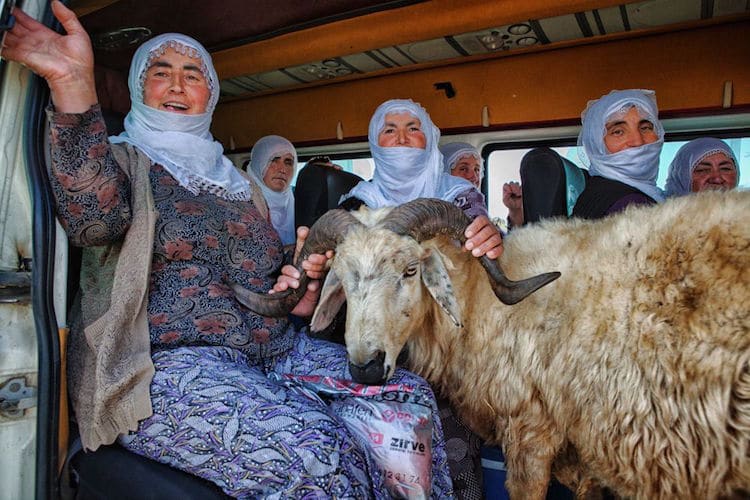
The Women and the Ram. The women separated the ram from the herd because he got sick. They take him to the village for treatment. Gorundu, Van, July 2013
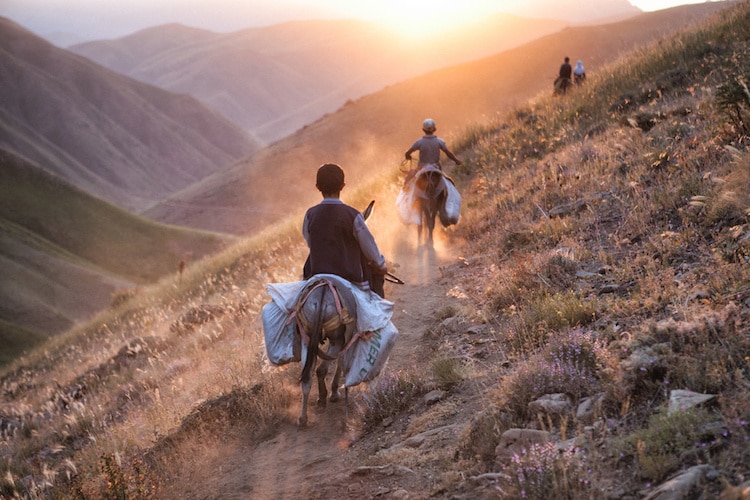
On the Way Home. Boys carry milk bins on donkeys to the village. They have to travel these difficult paths twice a day because their herd is far away. Toreli, Van, July 2013
How long do you see yourself returning to document life in Van?
I do not know exactly when this project will end. But as long as I live in Van, I will evaluate this opportunity that the Van city and the villages around it give me so generously.
What camera do you shoot with? Any other gear you never leave home without?
I have been using Canon EOS 5D Mark II for eight years. My lens preference is Canon EF 24-70 mm f/2.8. I need to be at ease as much as possible when I take photographs. Therefore, I don’t like crowded equipment. I don’t carry extra equipment other than memory cards and lens-cleaning papers. I don’t use tripods because my photography style doesn’t require long posing. I prefer not to use flash because I think that it is against the spirit of documentary photography. It is highly possible to disturb people by using a flash.
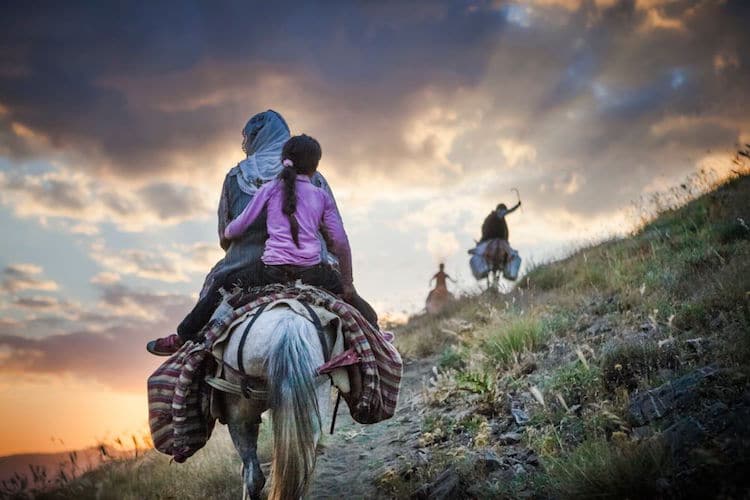
The Mother and Daughter. Tugba and her mother, Gulindan, return home after milking. The women—who work constantly from seven in the morning until nine at night—can only rest during sleeping hours. As Yezidi women say, “Women wake up first in our land, then the sun rises, so women give birth to the sun.” Toreli, Van, July 2013
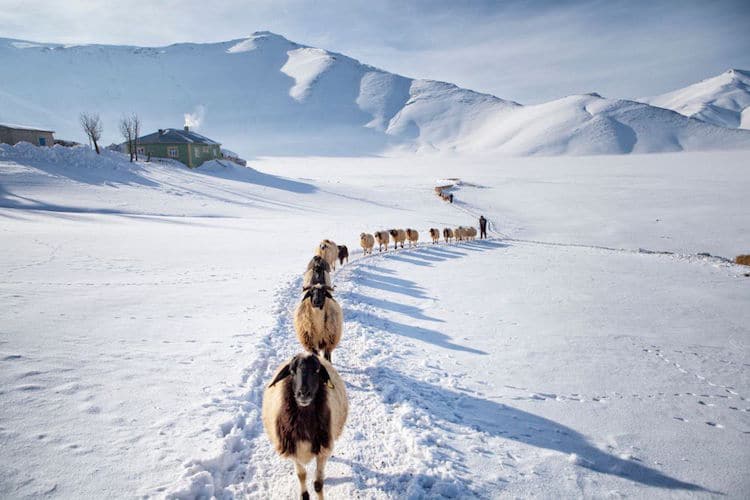
The Herd in Single File. The sheep are fed outdoors twice a day in the winter. Uzuntekne, Van, February 2017
Any upcoming projects you would like to share?
Some Kirghiz living in Pamir Region, called “the roof of the World,” in Afghanistan escaped from the Soviet-Afghan War and settled in Van in 1982 with the aid of Turkish Government. I would like to document the life of Kirghiz people living in the village of Ulupamir in Van. And I would like to document storytellers who are each a representative of an oral culture which tends to get lost.
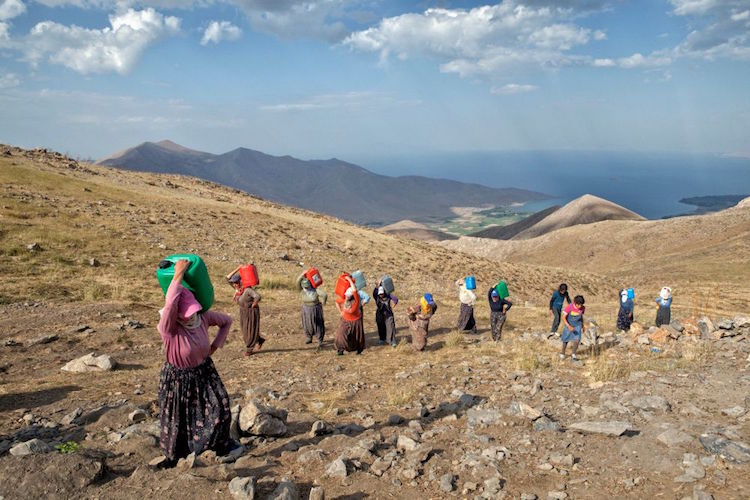
The Herdswomen. They carry bins filled with milk. Gorundu, Van, August 2011
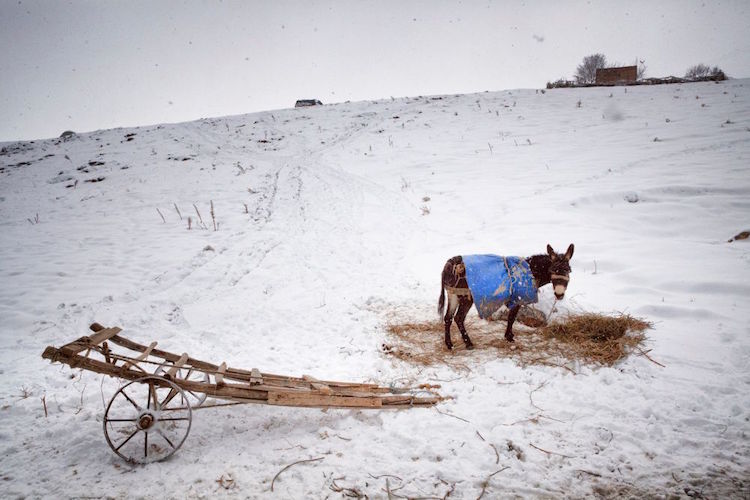
The Donkey Cart. He carries grass to the sheep twice a day in winter times. Gorundu, Van, January 2017
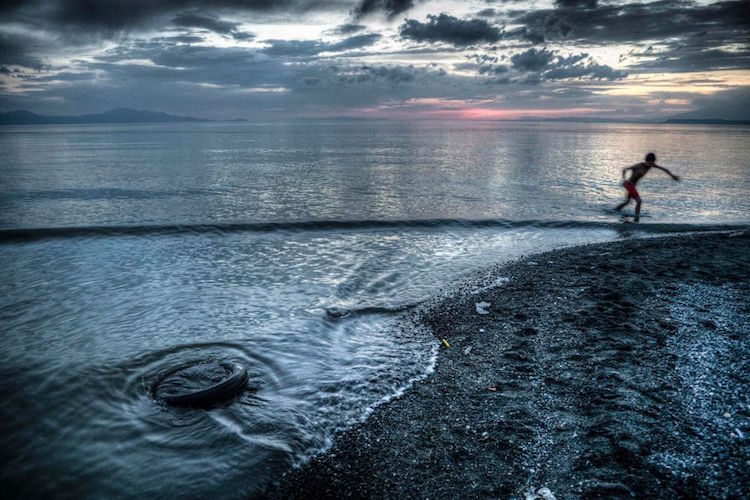
Lake Van. It is the largest lake in Turkey and also the largest soda lake in the world [strongly alkaline]. The local people call it a “sea.” Akdamar, Van, June 2011
Nadir Bucan: Website | Instagram
